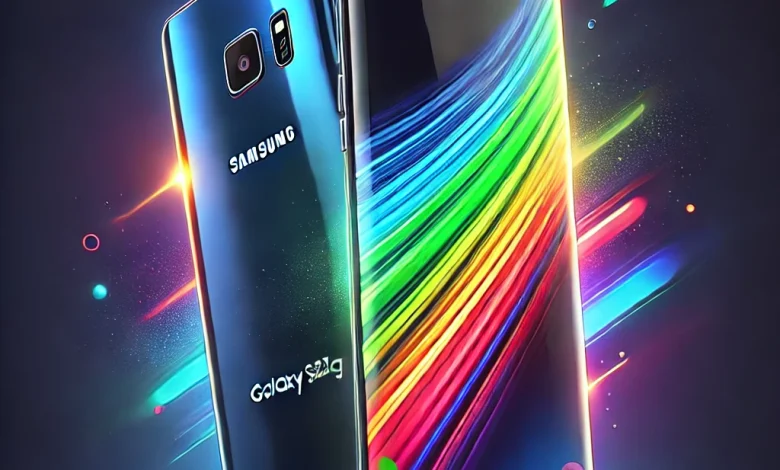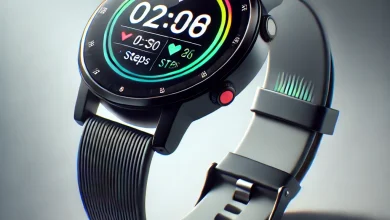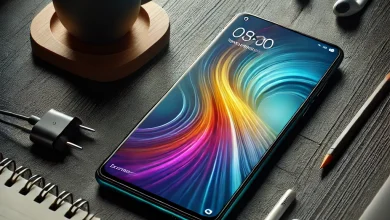15 Powerful Reasons Why the Samsung S7 Edge Still Impresses in 2025: A Complete Review

Table of Contents
The Samsung Galaxy S7 Edge was a landmark device in the smartphone industry when it launched in March 2016. Known for its bold design, powerful hardware, and innovative features, it quickly became one of the most popular smartphones in its era. Even today, the Samsung S7 Edge holds a special place among tech enthusiasts, collectors, and those who are still using this iconic device.
In this detailed article, we will explore every aspect of the Samsung Galaxy S7 Edge, from its design and build quality to its performance, camera capabilities, and software experience. We will also look at its lasting impact on the smartphone market and discuss why it remains relevant even after years of newer models being introduced.
1. Overview of the Samsung Galaxy S7 Edge
Launched as part of Samsung’s Galaxy S series, the S7 Edge represented a significant evolution from its predecessor, the Galaxy S6 Edge. Samsung’s engineers refined the concept of the curved edge display, giving the S7 Edge a more polished, functional, and ergonomic feel. The device was packed with cutting-edge specifications at the time, making it one of the most sought-after smartphones of 2016.
The Samsung S7 Edge came with a 5.5-inch Super AMOLED display, which was considered enormous for a flagship device at the time. With its bold and sleek design, this smartphone quickly captured the attention of consumers who were looking for premium features at a competitive price.
Key features of the Samsung Galaxy S7 Edge:
- Curved 5.5-inch Super AMOLED display
- Snapdragon 820 or Exynos 8890 chipset (depending on the region)
- 4GB of RAM and up to 128GB internal storage
- IP68 water and dust resistance
- 12MP rear camera with Dual Pixel technology
- 3,600mAh battery with fast and wireless charging support
2. Design and Build Quality
One of the standout features of the Samsung S7 Edge is its design. With an almost bezel-less screen and the iconic dual-edge display, the device looked futuristic and visually striking when compared to other smartphones in the market at the time.
The S7 Edge boasts a premium build quality with glass on both the front and back of the phone, framed with a metal chassis. The glass used was Corning Gorilla Glass 4, designed to resist scratches and accidental drops. While glass bodies may seem fragile, the device’s durable build quality ensured that it could withstand minor drops and impacts.
One of the most distinctive features of the Galaxy S7 Edge was its curved edges. The curved display not only provided an immersive viewing experience but also allowed users to interact with additional features through the Edge Panels. These panels could be customized to show apps, contacts, or news updates, making it a unique addition to the overall smartphone experience.
The water and dust resistance of the Samsung S7 Edge, rated at IP68, was a notable improvement over previous models. It allowed users to submerge the device in up to 1.5 meters of water for up to 30 minutes, offering peace of mind in wet environments, whether at the beach or in rainy weather.
3. Display: Super AMOLED at Its Best
The Samsung S7 Edge featured a 5.5-inch Super AMOLED display with a resolution of 1440 x 2560 pixels, offering stunning visuals and exceptional clarity. The colors were vibrant and true-to-life, making it perfect for watching videos, gaming, and browsing through photos.
The Super AMOLED technology offered deep blacks and high contrast ratios, giving the S7 Edge an edge over many of its competitors. With a pixel density of around 534 ppi (pixels per inch), the display was incredibly sharp, ensuring crisp text and vivid images. Additionally, the curved edges of the screen were designed not just for aesthetics, but also for functionality. It allowed users to access quick settings, apps, or shortcuts with a swipe along the edge.
In terms of brightness, the S7 Edge stood out for its excellent outdoor visibility, even under direct sunlight. This was an important factor for users who were constantly on the move and needed to use their phones in bright environments. The Always-On Display feature allowed users to view the time, notifications, and other key information without unlocking the phone, providing extra convenience.
4. Performance and Hardware
The Samsung S7 Edge came equipped with powerful hardware, making it a performance powerhouse when it was released. Depending on the region, the device was powered either by the Qualcomm Snapdragon 820 or Samsung’s own Exynos 8890 chipset. Both processors were based on 14nm technology, which made them efficient and capable of handling even the most demanding tasks with ease.
With 4GB of RAM and internal storage options of 32GB, 64GB, and 128GB, the S7 Edge could store plenty of apps, media, and files. The inclusion of a microSD card slot allowed for further expansion, a feature that was starting to disappear from many flagship smartphones at the time.
The 3,600mAh battery was another highlight of the Samsung S7 Edge. It supported both fast charging and wireless charging, making it incredibly convenient for users who were always on the go. With fast charging, the device could be fully charged in just over an hour, while wireless charging allowed for a cable-free experience.
When it came to performance, the S7 Edge was more than capable of handling multitasking, gaming, and media consumption. The device ran smoothly through day-to-day tasks, including browsing the web, watching videos, and running several apps simultaneously. Benchmark tests at the time showed that the S7 Edge was one of the fastest smartphones available, with performance that could rival even some of the most powerful desktop computers.
5. Camera Performance
The camera was one of the most impressive aspects of the Samsung S7 Edge. Samsung went with a 12MP rear camera that featured a large f/1.7 aperture, allowing more light to enter the lens for improved low-light performance. The camera used Dual Pixel technology, a feature that greatly improved autofocus speeds, making it one of the fastest smartphones for capturing photos.
The camera also included optical image stabilization (OIS), which helped reduce blurriness in photos and videos, especially in low-light conditions. Additionally, the front camera featured a 5MP sensor, also with a wide f/1.7 aperture, making it ideal for selfies and video calls.
In terms of image quality, the Samsung S7 Edge delivered sharp, vibrant photos with excellent detail. Low-light performance was one of its standout features, as the large pixels on the camera sensor allowed it to capture clear and bright photos even in dim conditions. Video recording was also impressive, with 4K video support and smooth stabilization.
Overall, the Samsung S7 Edge offered a fantastic camera experience that was ahead of its time and still held its ground against newer smartphones, especially in terms of color accuracy and low-light performance.
6. Software and Features
When it comes to software, the Samsung S7 Edge launched with Android 6.0 Marshmallow and received an update to Android 7.0 Nougat over time. Samsung’s TouchWiz UI, which had often been criticized for being heavy and clunky in the past, underwent significant improvements for the S7 Edge. It became more refined, intuitive, and user-friendly, offering a smoother experience.
The S7 Edge came with several unique features that set it apart from other flagship phones. The Edge Panels allowed users to customize the curved edges of the screen to display quick shortcuts, apps, or even the weather. The Always-On Display, another signature feature, displayed important information such as the time, date, and notifications without having to unlock the phone.
Samsung’s integration of Samsung Pay allowed users to make secure payments using their device, making the S7 Edge a great option for those who wanted a complete mobile experience. Additionally, Samsung Knox provided robust security features to keep data safe from unauthorized access.
7. Connectivity and Additional Features
The Samsung S7 Edge was well-equipped with a range of connectivity options, including 4G LTE, Wi-Fi, Bluetooth 4.2, and USB Type-C. While USB Type-C was not yet widely adopted at the time, it offered faster charging and data transfer speeds. The inclusion of a headphone jack was a notable feature, as many manufacturers began phasing out this port in favor of wireless solutions in later models.
The device also supported Gear VR, allowing users to experience virtual reality through Samsung’s ecosystem of VR content. Samsung Pay was another key feature, allowing users to make payments securely through their phone.
The S7 Edge’s IP68 water and dust resistance rating provided users with extra peace of mind, allowing them to use their device in wet conditions without worrying about damaging it. Whether at the poolside or in the rain, the phone could handle moisture exposure without issue.
8. Strengths and Weaknesses
Strengths:
- Design: The curved display and premium materials made the S7 Edge stand out visually.
- Performance: Fast, smooth, and capable of handling demanding tasks.
- Camera: Excellent image quality, especially in low light, with a fast autofocus system.
- Battery Life: Reliable battery with fast and wireless charging support.
- Software: Refined UI with unique features like Edge Panels and Always-On Display.
Weaknesses:
- No Removable Battery: Unlike older Galaxy phones, the S7 Edge did not feature a removable battery, a feature some users still preferred.
- Price: At launch, it was on the expensive side compared to some competitors.
- Availability of Newer Models: The Galaxy S7 Edge is no longer being actively supported, with newer models offering better performance and features.
9. Legacy and Impact
The Samsung Galaxy S7 Edge left a lasting impact on the smartphone industry. Its innovative design, powerful performance, and excellent camera set a new standard for flagship smartphones. It showcased Samsung’s ability to push boundaries and take risks in a competitive market, with the curved-edge display becoming a defining feature of many future devices.
Though it has been succeeded by the Galaxy S8 and other models, the S7 Edge continues to be a beloved device. Many users still prefer its design and usability, and its features continue to hold up even in 2025.
10. Conclusion
The Samsung S7 Edge was a standout phone in its era, offering cutting-edge technology, a stunning design, and a great user experience. While it may no longer be the most advanced smartphone on the market, its legacy is undeniable. For those who still use it today, the Samsung S7 Edge continues to be a reliable and powerful device, proving that great smartphones can stand the test of time.
If you’re looking for a device that balances performance, design, and value, the Samsung S7 Edge remains an excellent choice—even as we move further into 2025.
FAQs
1. What are the key features of the Samsung S7 Edge?
The Samsung S7 Edge comes with a 5.5-inch curved Super AMOLED display, powered by either the Qualcomm Snapdragon 820 or Samsung Exynos 8890 chipset, depending on your region. It features a 12MP rear camera with Dual Pixel technology for fast autofocus, a 5MP front camera, 4GB of RAM, and internal storage options ranging from 32GB to 128GB with microSD card support. The device also includes a 3,600mAh battery, IP68 water and dust resistance, and wireless charging support.
2. Is the Samsung S7 Edge still a good phone in 2025?
While the Samsung S7 Edge is no longer receiving software updates, it still offers solid performance for everyday tasks, making it a viable option for users who don’t require the latest features. Its durable build, great camera, and smooth display make it a reliable device, though it may not compare to more recent smartphones in terms of performance or battery life.
3. Does the Samsung S7 Edge have a removable battery?
No, the Samsung S7 Edge does not have a removable battery. Samsung moved to a sealed design with this model, which means the battery is not user-replaceable. However, the device still features a robust 3,600mAh battery that supports fast and wireless charging.
4. How does the camera on the Samsung S7 Edge perform?
The Samsung S7 Edge is known for its excellent camera, especially for its time. The 12MP rear camera features Dual Pixel technology for faster autofocus and superior low-light performance, and the f/1.7 aperture allows for bright, clear photos even in dim settings. The 5MP front-facing camera is also impressive for selfies and video calls. Overall, the camera delivers sharp, vibrant images and videos.
5. Can I use the Samsung S7 Edge for gaming?
Yes, the Samsung S7 Edge can handle gaming quite well, even by today’s standards. The powerful Snapdragon 820 or Exynos 8890 processor, along with 4GB of RAM, ensures smooth performance for most modern games. Whether you’re playing casual games or graphically demanding titles, the S7 Edge can deliver a solid gaming experience with good frame rates.
6. Is the Samsung S7 Edge waterproof?
Yes, the Samsung S7 Edge has an IP68 water and dust resistance rating. This means the device can withstand being submerged in water up to 1.5 meters deep for 30 minutes, making it more resistant to water damage than many other smartphones of its time.
7. Does the Samsung S7 Edge support wireless charging?
Yes, the Samsung S7 Edge supports both wired fast charging and wireless charging. The device uses the Qi wireless charging standard, making it compatible with most wireless chargers. This feature adds convenience for users who prefer not to deal with charging cables.
8. What are the advantages of the curved display on the Samsung S7 Edge?
The curved display of the Samsung S7 Edge offers a more immersive viewing experience, especially for videos and games. Additionally, the curved edges serve functional purposes, such as quick access to notifications, apps, and shortcuts through the Edge Panels. This innovative design set the S7 Edge apart from other smartphones at the time and created a unique, premium feel.
9. How much storage does the Samsung S7 Edge offer?
The Samsung S7 Edge comes with three storage options: 32GB, 64GB, and 128GB of internal storage. It also includes a microSD card slot, allowing you to expand your storage up to 200GB, which is great for users who store large amounts of media, apps, and files.
10. Does the Samsung S7 Edge still receive software updates?
As of 2025, the Samsung S7 Edge is no longer receiving official software updates. While it received major updates during its lifecycle, including upgrades to Android 7.0 Nougat, newer models have since taken precedence. If you’re still using the S7 Edge, it’s recommended to be cautious about security vulnerabilities due to the lack of recent updates.
11. Is the Samsung S7 Edge a good option for budget-conscious buyers?
While the Samsung S7 Edge was a premium device at launch, it is now available at a significantly lower price point. For budget-conscious buyers who don’t need the latest features but still want a reliable, high-quality phone, the S7 Edge offers great value for the price. It provides a solid display, decent camera performance, and good battery life at a much lower cost than newer flagship devices.
12. How does the Samsung S7 Edge compare to newer Samsung Galaxy models?
Compared to newer models like the Galaxy S8 and S9, the Samsung S7 Edge falls behind in terms of processing power, camera quality, and battery efficiency. Newer devices offer faster processors, improved camera systems, and additional features like facial recognition and more advanced displays. However, the S7 Edge still holds up well for users who prefer a smaller, more compact device without the latest hardware.
13. Can the Samsung S7 Edge run Android apps smoothly?
Yes, the Samsung S7 Edge can run Android apps smoothly thanks to its Snapdragon 820 or Exynos 8890 chipsets and 4GB of RAM. The phone handles everyday tasks, such as browsing, social media, and entertainment, with ease. However, it may experience occasional lag when running more demanding apps or multitasking heavily, especially with more recent Android applications.
14. What makes the Samsung S7 Edge different from the regular Galaxy S7?
The main difference between the Samsung S7 Edge and the standard Galaxy S7 lies in the design and display. The S7 Edge features a larger, curved display, offering an edge-to-edge screen experience, while the regular Galaxy S7 has a traditional flat display. Additionally, the S7 Edge has slightly better battery life due to its larger size.
15. Should I buy the Samsung S7 Edge in 2025?
If you’re looking for a budget-friendly option that still offers decent performance, the Samsung S7 Edge remains a viable choice in 2025. However, keep in mind that it lacks software updates, and you may not be able to enjoy the latest features or security patches. If you need a more future-proof device, you may want to consider a newer Samsung Galaxy model.




